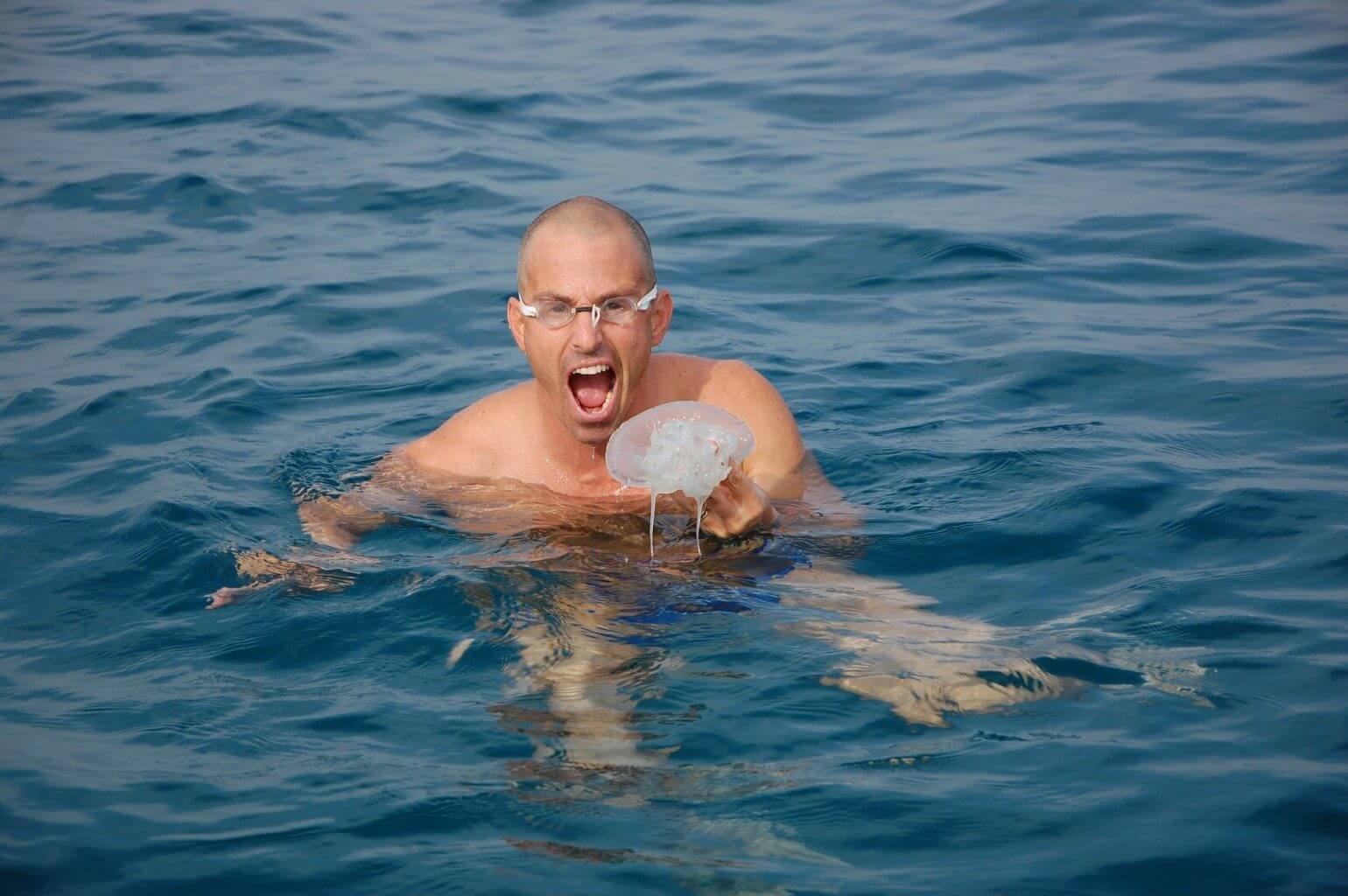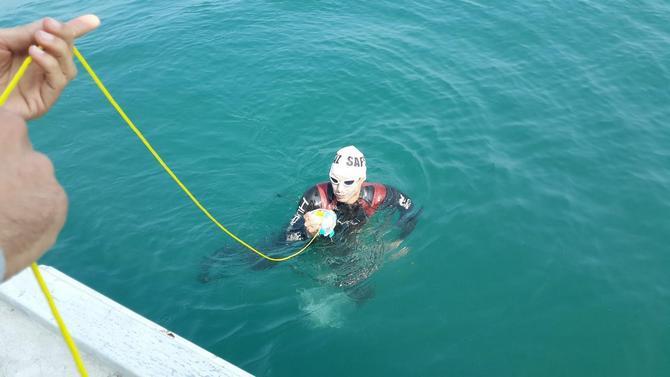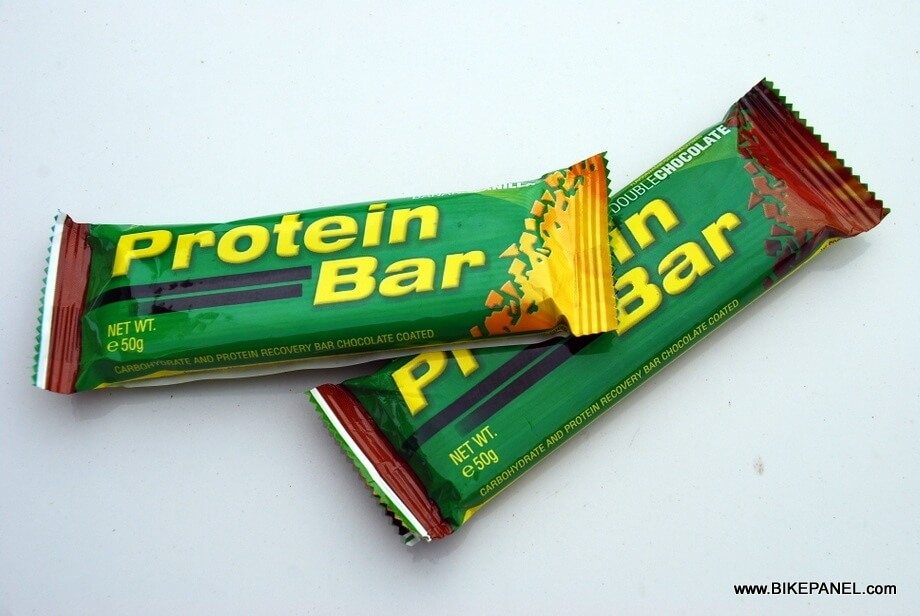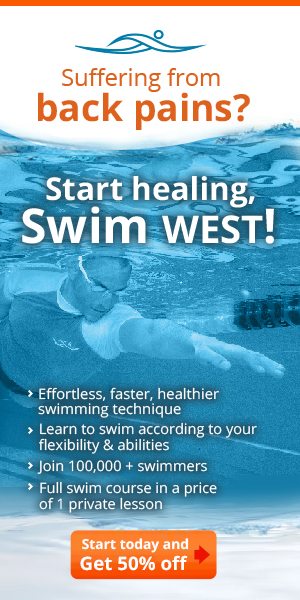What should you eat when swimming long distance? Can Jellyfish provide appropriate nutrition when swimming a marathon?
In this article we’ll discuss long distance swims and what we mean is swimming a marathon which is somewhere between 10 kilometers to 50 kilometers in open water.
And when considering what we should eat, we’re looking at what will provide the body with sufficient energy for a long time, and as importantly, how you won’t harm your body at the end of this “ultra” marathon and what is exactly the difference between an ultra-open water marathons to a running marathon?
What should we consume?
When swimming long distance, there’s always the challenge is always not to overload the body with food, avoid salts because that can encourage nausea from dehydration, avoid fiber so our digestive system doesn’t work overtime while swimming and to find the best nutrition via simple carbs, and protein you can consume easily and quickly so you don’t lose your body heat while eating and that it’ll be easy to swallow.
Water temperature and how often should you eat?
When we’re talking about a running marathon, you can always carry water with you if you want, you have no problems taking eating jelly’s and consume them while you’re walking or standing and basically to give the body what it needs easily. But when swimming a marathon in open water and especially when we’re talking about cold salt water a few variables need to be taken into consideration:
1. The amount of salt we’re drinking without noticing (something which is very hard to measure)
2. The water’s cold temperature which makes our bodies lose energy at a quicker pace, therefore we need to take in more energy, but not too much.
Ideally, if its maintainable, is eating something every 45 minutes, or more accurately – every 43 minutes (2 minutes is the time in which you stop and eat) and when exactly at 45 minutes you keep on going. There are situations in which the body gets too cold and then in order to bring body warmth back you can drink warm tea with a bit of sugar or without. This will also help us swallow the food more easily and quickly.
There are extreme situations when swimmers will have to stop and eat every -20-30 minutes and that’s totally fine, as long as they know exactly what they should eat in every break they take, even if the swim is 20 hours.
In this article we’ll give you 3 examples of good nutrition while swimming a 12 hour swim.
First example – A swimmer that doesn’t like bananas and dates and start swimming at 24:00 sharp
*It is important to note that a swimmer that starts swimming in the middle of the night, when the body is used to sleeping can overcome some strange things, such as cold, heat, weakness, hunger inability to swallow and more, all which have to do with what the body is used to doing at that time which is sleeping… Therefore if you plan to swim long distance at night, it’s recommended to practice swimming in those hours once every 2 weeks for a month, until 2 weeks before the swim itself.
This swimmer after appropriate night swimming practices will be:
After 45 minutes: A slice of bread with honey and water.
After 30 minutes: Tea with no sugar
After 30 more minutes: Slice of white bread with honey + water
After 30 more minutes: Team + energy drink that doesn’t contain salts.
And this cycle will repeat for the whole time this swimmer will swim.
**It’s important to emphasize that this swimmer is trained at long distance, night swimming, high waves, and knows exactly what she needs to eat at every distance and distance. This swimmer knows when she’s losing energy and can swim distances at 52-54 strokes a minute no matter what the water is like. During a 16:30 hour (46 kilometers) swim, she took approx. 4 jelly’s.
The swimming technique is very important especially the breathing in freestyle and the head position so you wont feel the food is going up your trout.
Example # 2: Ori Sela, an open water long distance and triathlon coach and swimmer

As an open water and long distance swimmer and coach, the previous nutrition we suggested is completely different than mine that I’ll describe here and it just comes to show how different people eat different things throughout the swim. You need to feel what works best for you and what don’t.
It’s also important to note that I work on getting my body used to consume to what I can take with me inside the Buoy . If I’m accompanied by a boat it’s easier to eat other things, but since I won’t have a boat with me while practicing, my diet as a coach and open water swimmer is different than many other swimmers who rely on having a boat with them.
**this example of swimming and eating is for long distance swimming and not for a marathon open water cometition.
My diet:
After 45 minutes: One slice of whole wheat bread with Date marmalade + water.
Second break (I break every 45 minutes): Banana, 2 dates + water.
Thirds break: A “High Five” Protein bar, which is easy and quick to digest, melts quickly in the mouth and is easy to swallow.
And I repeat this cycle.
My nutrition for long distance is made out of dates, bananas, protein bars, whole wheat or rye bread with date spread or tahini and honey mix and I always have 4 jelly’s with me in my bathing suit, just in case I feel the need for a boost of immediate energy.
** I personally prefer food over Jelly’s.
*** Another example of something many swimmers will consume is a warm carb drink which you can drink every 30 minutes and gives you 300 calories an hour (150 calories every half hour).
There’s no doubt that digestion wise the drink is much easier to digest and it enables shorter breaks. It’s wonderful for crossing a canal or other cold water swims.
**It is recommended to read some questions about open water and marathon swims by Steven Munatones>>
Swimming tips for Marathon open water swimming, how to eat in long distance
- Swim in the same hours as your goal in training so you will feel the changes in your body.
- Try to know what you are going to eat before the swim, each 20 min, 30 min, 45 min…
- Train with the same meal every time.
- Feel your body what’s good for your coach or nutrition is not always good for you.(listen to your body and to your coach)
- Salt in jells are O.K but not too much when swimming in salt waters.
- Last swimming tip: try to swim every 3 strokes if you can in order to loosen your neck and shoulders.
Hope you liked the article and we would love for you to share your experience in your marathon swimming.
For more swimming tips, swimming techniques, and the learn to swim freestyle in WEST swimming technique it is recommended to fill in the WEST swimming questionnaire and learn how to swim freestyle fast, easy and protect your lower back>>




